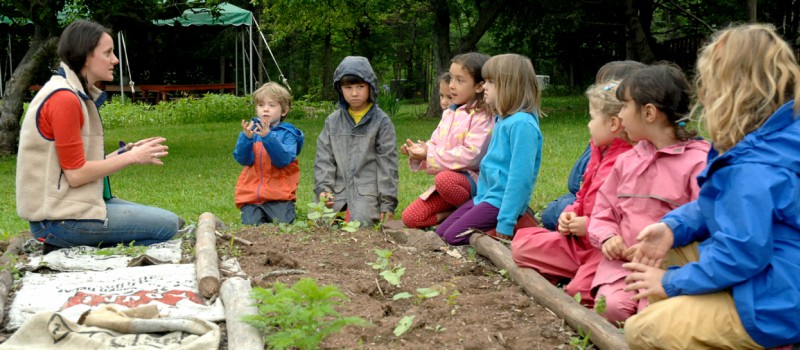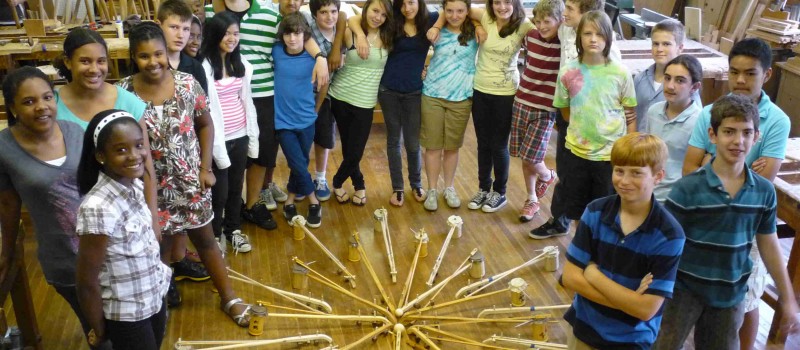The school where employees of Silicon Valley giants like Google, Apple, Yahoo send their children
- 23th january, 2017
LOS ALTOS, Calif. — The chief technology officer of eBay sends his children to a nine-classroom school here. So do employees of Silicon Valley giants like Google, Apple, Yahoo and Hewlett-Packard.
But the school’s chief teaching tools are anything but high-tech: pens and paper, knitting needles and, occasionally, mud. Not a computer to be found. No screens at all. They are not allowed in the classroom, and the school even frowns on their use at home.
Schools nationwide have rushed to supply their classrooms with computers, and many policy makers say it is foolish to do otherwise. But the contrarian point of view can be found at the epicenter of the tech economy, where some parents and educators have a message: computers and schools don’t mix.
This is the Waldorf School of the Peninsula, one of around 160 Waldorf schools in the country that subscribe to a teaching philosophy focused on physical activity and learning through creative, hands-on tasks. Those who endorse this approach say computers inhibit creative thinking, movement, human interaction and attention spans.
The Waldorf method is nearly a century old, but its foothold here among the digerati puts into sharp relief an intensifying debate about the role of computers in education.
While other schools in the region brag about their wired classrooms, the Waldorf school embraces a simple, retro look — blackboards with colorful chalk, bookshelves with encyclopedias, wooden desks filled with workbooks and No. 2 pencils.
On a recent Tuesday, Andie Eagle and her fifth-grade classmates refreshed their knitting skills, crisscrossing wooden needles around balls of yarn, making fabric swatches. It’s an activity the school says helps develop problem-solving, patterning, math skills and coordination. The long-term goal: make socks.
In second grade, students standing in a circle learned language skills by repeating verses after the teacher, while simultaneously playing catch with bean bags. It’s an exercise aimed at synchronizing body and brain. Here, as in other classes, the day can start with a recitation or verse about God that reflects a nondenominational emphasis on the divine.
Some education experts say that the push to equip classrooms with computers is unwarranted because studies do not clearly show that this leads to better test scores or other measurable gains.
Is learning through cake fractions and knitting any better? The Waldorf advocates make it tough to compare, partly because as private schools they administer no standardized tests in elementary grades. And they would be the first to admit that their early-grade students may not score well on such tests because, they say, they don’t drill them on a standardized math and reading curriculum.
Paul Thomas, a former teacher and an associate professor of education at Furman University, who has written 12 books about public educational methods, disagreed, saying that “a spare approach to technology in the classroom will always benefit learning.”
“Teaching is a human experience,” he said. “Technology is a distraction when we need literacy, numeracy and critical thinking.”
And Waldorf parents argue that real engagement comes from great teachers with interesting lesson plans.
“Engagement is about human contact, the contact with the teacher, the contact with their peers,” said Pierre Laurent, 50, who works at a high-tech start-up and formerly worked at Intel and Microsoft. He has three children in Waldorf schools, which so impressed the family that his wife, Monica, joined one as a teacher in 2006.
And where advocates for stocking classrooms with technology say children need computer time to compete in the modern world, Waldorf parents counter: what’s the rush, given how easy it is to pick up those skills?
“It’s supereasy. It’s like learning to use toothpaste,” Mr. Eagle said. “At Google and all these places, we make technology as brain-dead easy to use as possible. There’s no reason why kids can’t figure it out when they get older.”
The students, meanwhile, say they don’t pine for technology, nor have they gone completely cold turkey. Andie Eagle and her fifth-grade classmates say they occasionally watch movies. One girl, whose father works as an Apple engineer, says he sometimes asks her to test games he is debugging. One boy plays with flight-simulator programs on weekends.
The students say they can become frustrated when their parents and relatives get so wrapped up in phones and other devices. Aurad Kamkar, 11, said he recently went to visit cousins and found himself sitting around with five of them playing with their gadgets, not paying attention to him or each other. He started waving his arms at them: “I said: ‘Hello guys, I’m here.’ ”
Finn Heilig, 10, whose father works at Google, says he liked learning with pen and paper — rather than on a computer — because he could monitor his progress over the years.
“You can look back and see how sloppy your handwriting was in first grade. You can’t do that with computers ’cause all the letters are the same,” Finn said. “Besides, if you learn to write on paper, you can still write if water spills on the computer or the power goes out.”
Source: The New York Times






